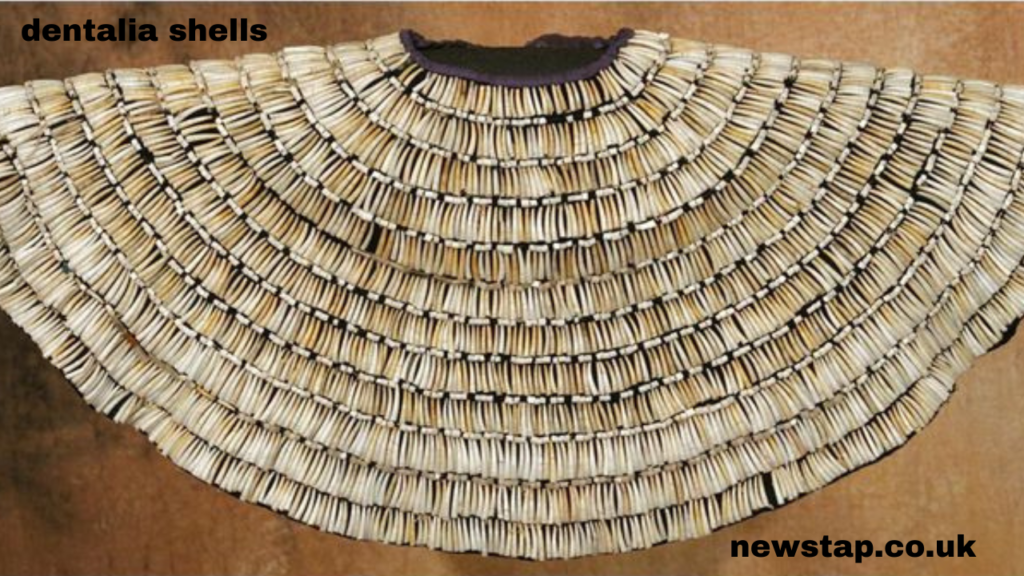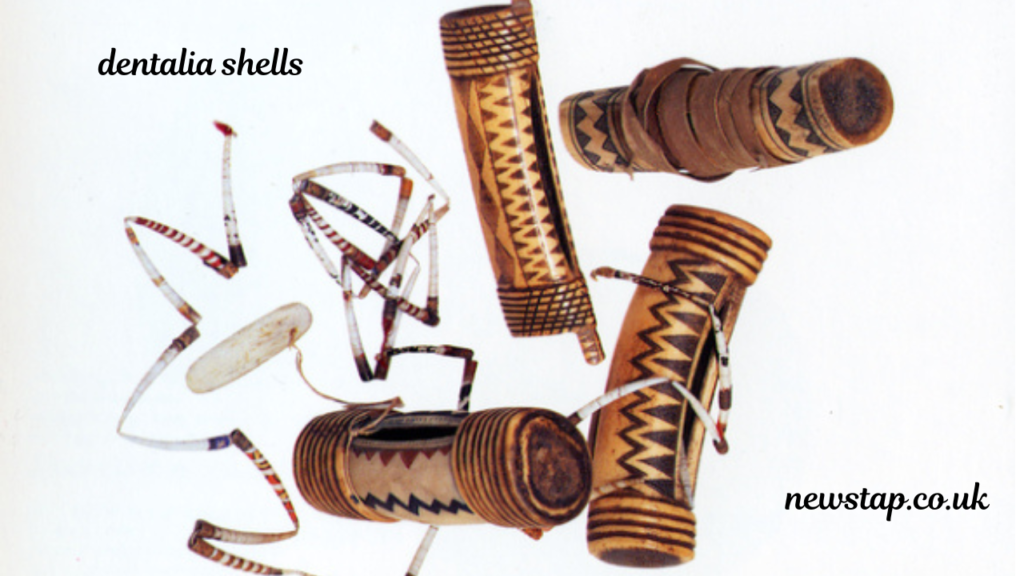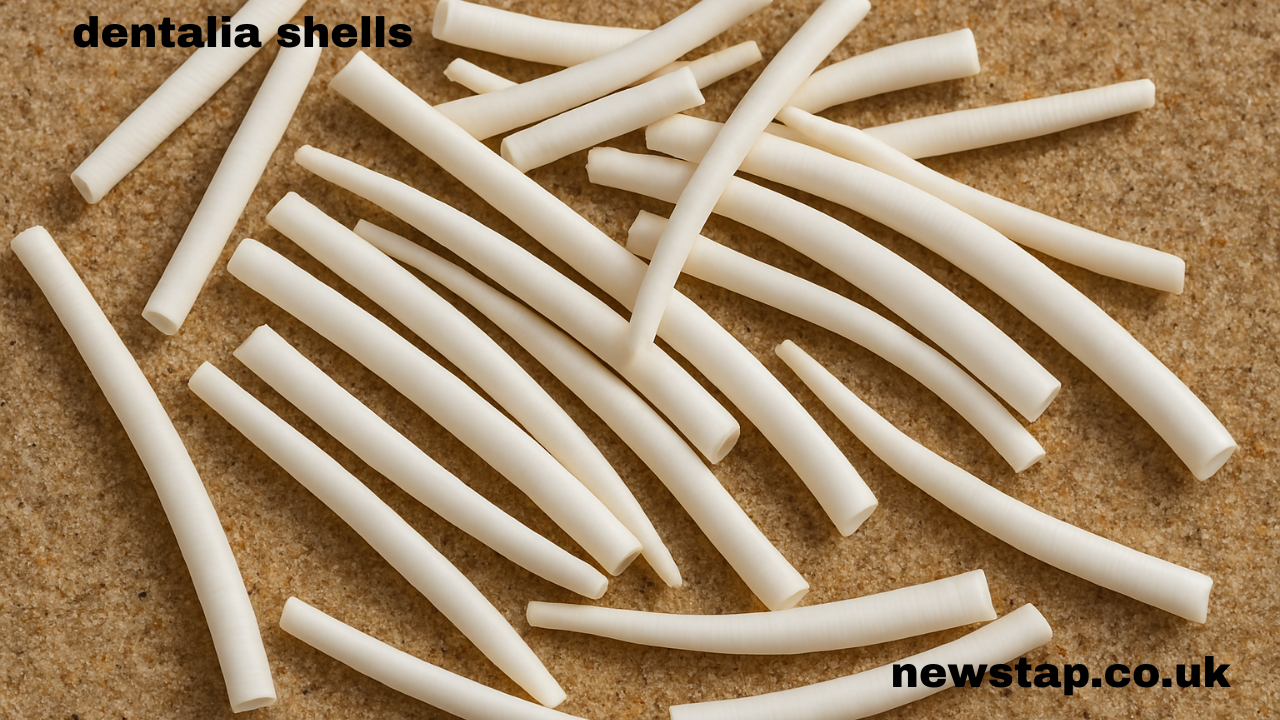Introduction: Why Dentalia Shells Still Matter Today
Have you ever found a shell and speculated on its narrative? More than only beautiful ocean relics, dentalia shells are rich in history, deeply ingrained in Indigenous culture, and desired by artists and collectors all over the world. This post will explain what dentalia shells are, their biological and cultural relevance, and how they are still employed today in anything from tribal ceremonies to jewelry-making.
Whether you’re a shell collector, anthropology enthusiast, or artisan looking for natural elements, dentalia shells hold timeless appeal—and surprising relevance in today’s world.
What Are Dentalia Shells?

Origins in Nature
Dentalia shells come from a type of marine mollusk in the class Scaphopoda, often referred to as “tusk shells” because of their elongated, tubular shape. These shells are generally white or ivory in color and can range from a few millimeters to several centimeters in length.
Key Biological Facts:
- Scientific classification: Class Scaphopoda, Family Dentaliidae
- Habitat: Sandy or muddy seafloors of deep and shallow marine waters
- Shape: Curved and tubular, resembling small tusks or elongated cones
Fun Fact: Despite their delicate appearance, dentalia shells are incredibly resilient, sometimes lasting thousands of years in archaeological sites.
Historical Significance of Dentalia Shells
Ancient Currency and Symbol of Status
Dentalia shells have long been more than just decorative. For centuries, they functioned as a form of currency and social status in Indigenous cultures, particularly among Native American tribes in the Pacific Northwest.
Used For:
- Currency: Traded among tribes, often strung into lengths to measure value
- Adornment: Used in necklaces, headdresses, and ceremonial garments
- Status Symbol: The longer and more pristine the shell, the higher the wearer’s social status
Expert Insight: According to a study from the Smithsonian National Museum of the American Indian (nofollow), dentalia shells were considered more valuable than beads or even precious stones in some Indigenous cultures.
Archaeological Importance
Shell middens and burial sites containing dentalia shells offer insight into the trade routes and social hierarchies of ancient communities. Their presence has helped archaeologists map ancient economic networks across North America and even parts of Asia.
Modern-Day Uses of Dentalia Shells

1. Jewelry and Fashion Accessories
Dentalia shells are prized for their delicate look and organic symmetry. Today, they’re often used in:
- Earrings
- Necklaces
- Bracelets
- Hair accessories
Example: Contemporary Indigenous designers are blending traditional materials like dentalia with modern metals and stones to create pieces that honor their heritage.
2. Cultural and Spiritual Ceremonies
Many Indigenous communities continue to use dentalia shells in ceremonies, representing purity, prosperity, and ancestral connection.
3. Crafting and Educational Projects
Teachers and educators often use dentalia shells in classroom settings to:
- Teach about marine biology
- Explore Native American history
- Demonstrate early economic systems
Case Studies: Dentalia Shells in Action
1. The Makah Tribe of Washington State
The Makah tribe used dentalia shells not only in trade but also as a core component of bridal dowries. Elders still share stories of how the shells symbolized wealth, integrity, and the commitment of marriage.
2. Contemporary Jewelry Brand Spotlight
A small artisan shop on Etsy (nofollow) sells handcrafted jewelry using ethically sourced dentalia shells, attracting eco-conscious buyers who appreciate cultural symbolism.
Pros and Cons of Using Dentalia Shells

Pros:
- Sustainable: Often collected without harming marine life
- Culturally Rich: Deep historical roots and spiritual value
- Versatile: Suitable for various crafts and designs
- Aesthetic Appeal: Unique, delicate, and natural beauty
Cons:
- Fragile: Easily breakable if not handled properly
- Ethical Concerns: Must be sourced responsibly to respect cultural and environmental integrity
- Limited Availability: Authentic dentalia can be hard to find and often costly
FAQs About Dentalia Shells
Q1: Are dentalia shells rare?
Yes, especially high-quality or long dentalia shells. Their rarity adds to their historical value and modern demand.
Q2: Where can I buy authentic dentalia shells?
Check specialty craft stores, Native American art vendors, and reputable online platforms like Etsy or eBay (nofollow).
Q3: Are dentalia shells legal to own?
Yes, but it’s essential to ensure they are ethically sourced and not taken from protected marine reserves.
Q4: Can I use dentalia shells in modern art?
Absolutely! Artists frequently incorporate them into mixed media, jewelry, and cultural art pieces.
How to Identify Authentic Dentalia Shells
- Shape: Slightly curved and tubular
- Color: Usually white or light ivory
- Texture: Smooth with a gentle sheen
- Size: Ranges from a few millimeters to about 2 inches
Pro tip: When purchasing, ask sellers for sourcing details and authenticity guarantees.
Conservation and Ethical Considerations
As with all natural resources, sustainability is key. When collecting or buying dentalia shells:
- Avoid harvesting live mollusks
- Support Indigenous artisans
- Choose certified or verified sellers
Internal Link Suggestion: Learn more about sustainable marine practices (dofollow)
Conclusion: Why Dentalia Shells Still Capture Hearts and Minds
Dentalia shells aren’t just remains of the sea—they’re storytellers. They communicate old histories, convey cultural meaning, and find fresh life in current craftsmanship. Whether you’re a hobbyist, historian, or handmade jewelry lover, dentalia shells offer a beautiful, meaningful connection to both nature and heritage.
Also Read : Cabanel’s Fallen Angel: A Controversial Depiction of Lucifer



